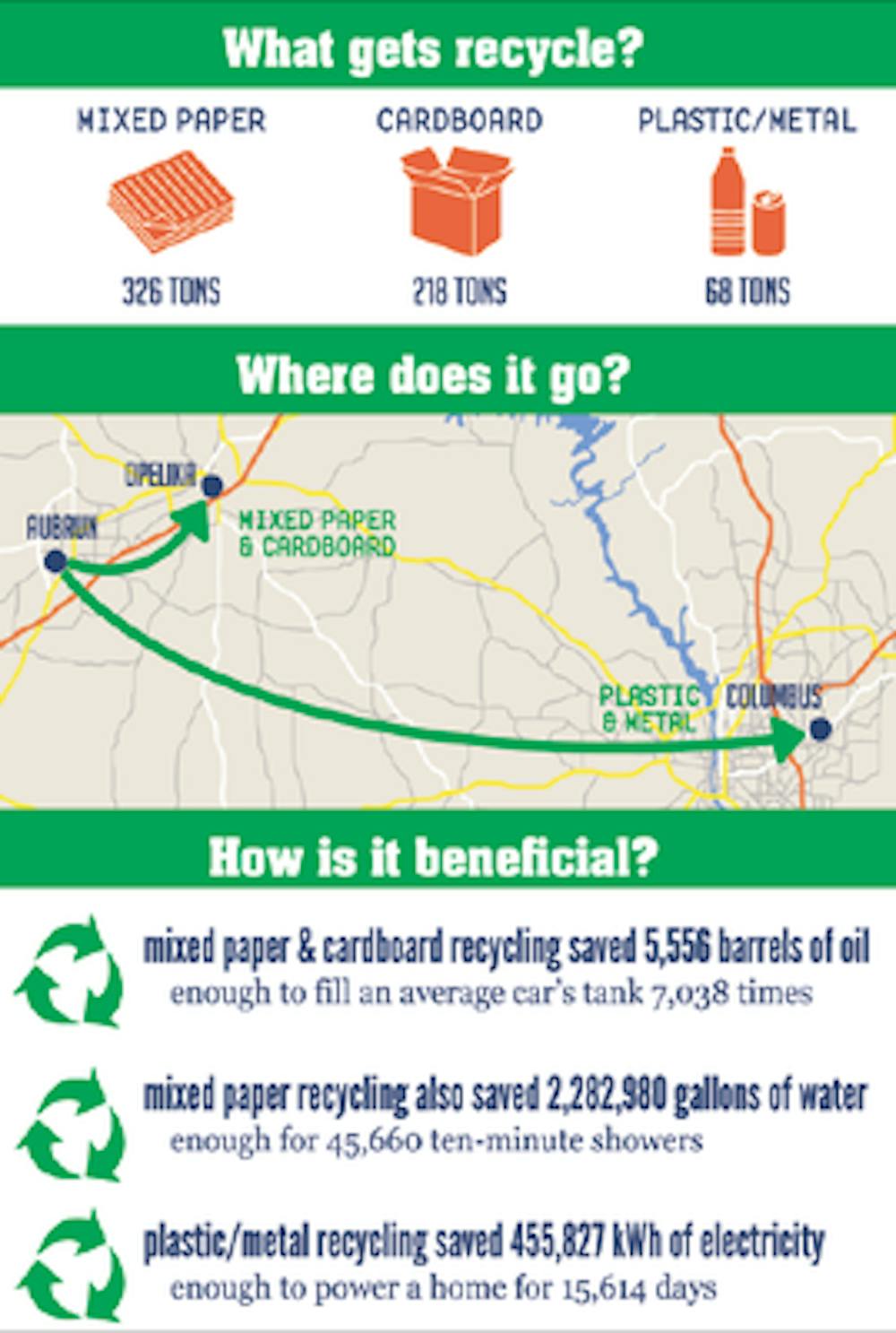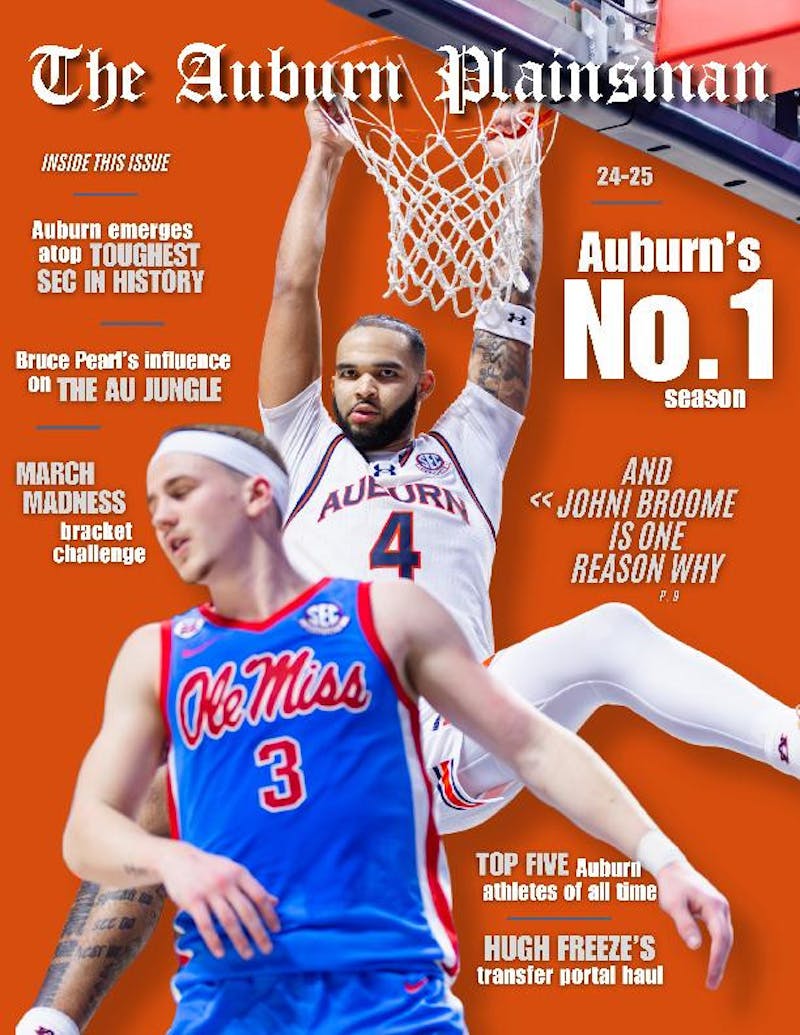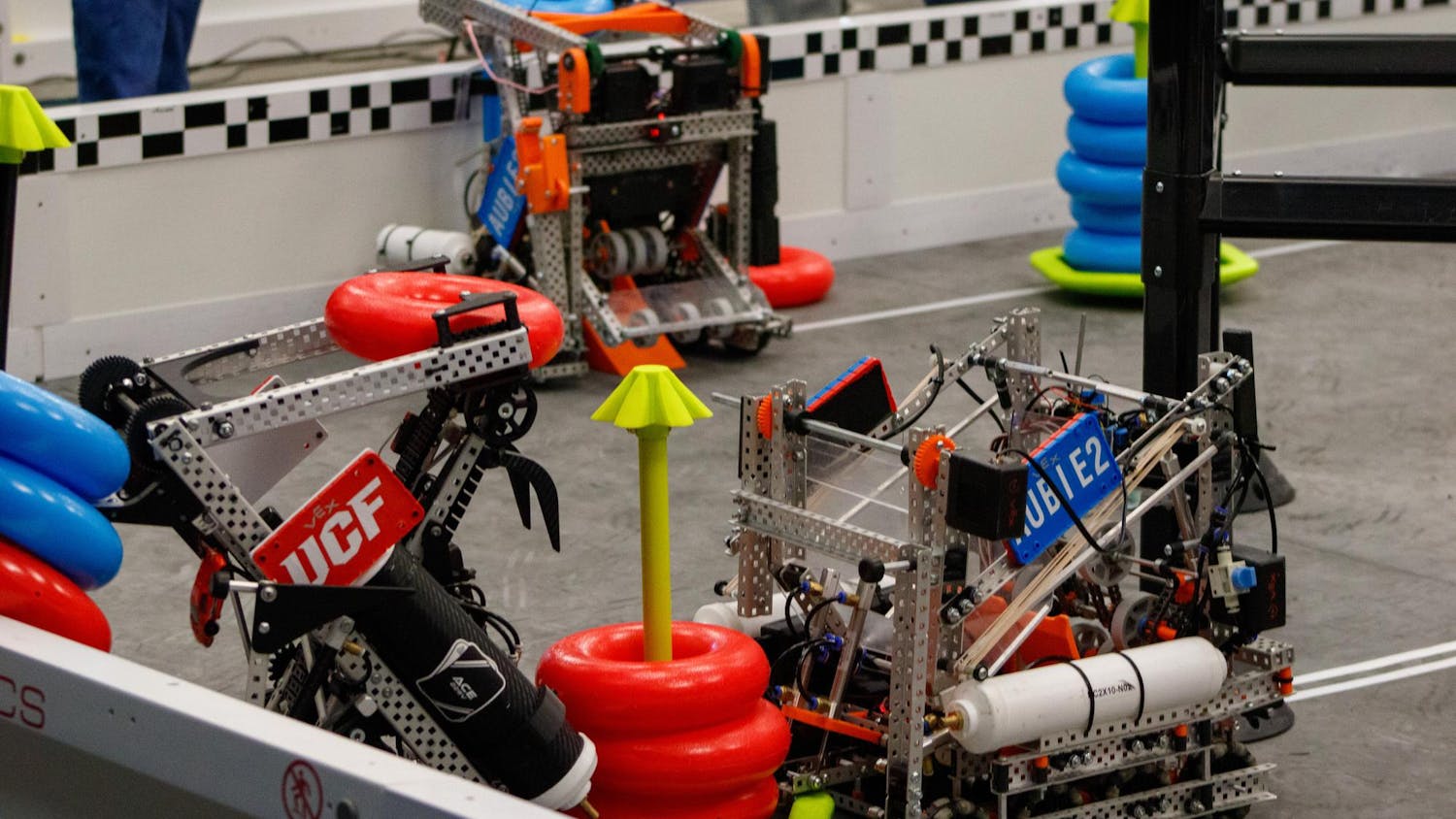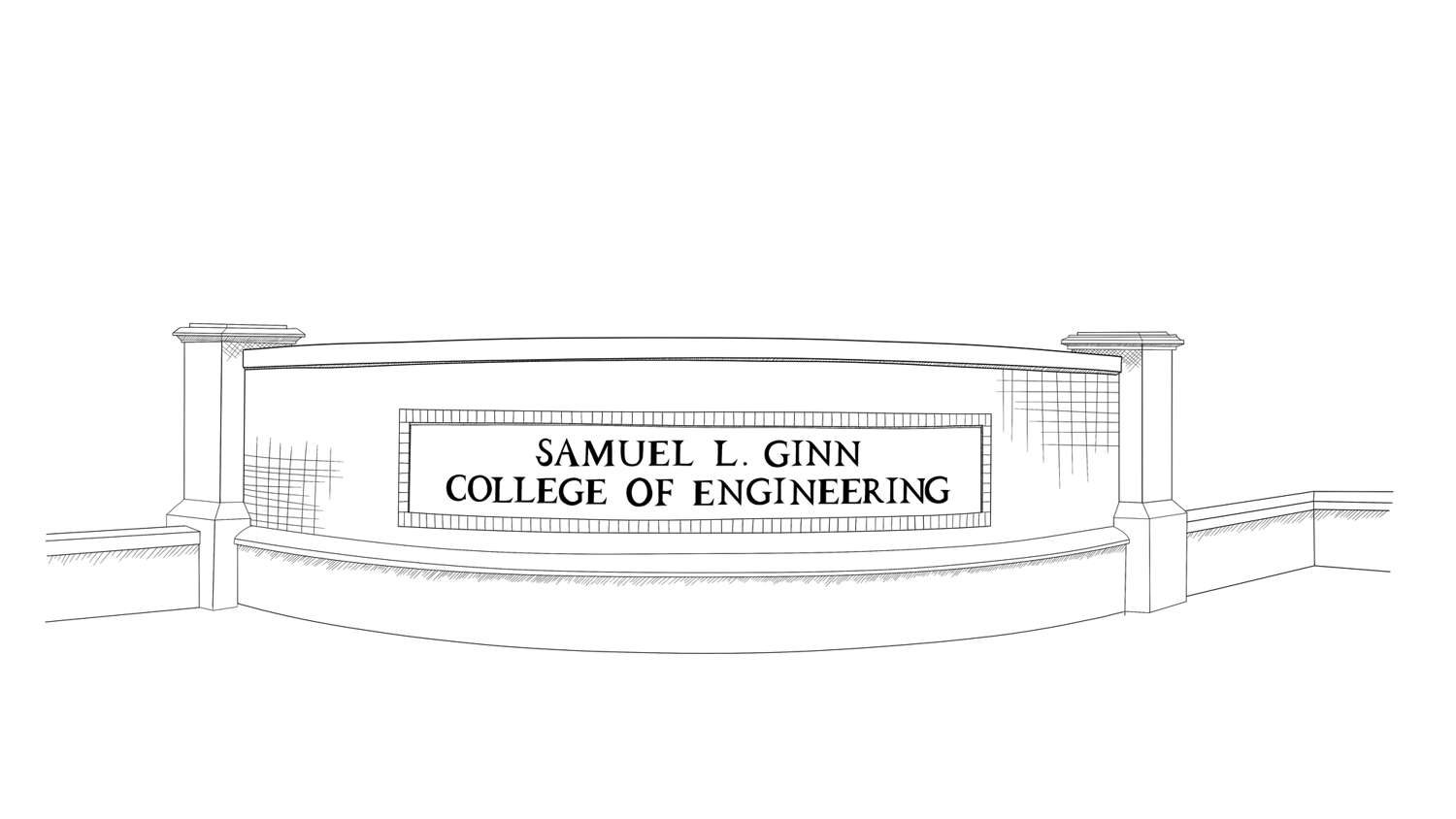Most students are aware of the recycling bins around campus and have probably contributed a plastic bottle or two.
However, some people are unaware of what happens to their recycling after they throw it in the bin.
Courtney Washburn, recycling coordinator in the waste reduction and recycling department, said the trash and recyclables from campus go through a specific process.
"The custodians service it first," Washburn said. "Then our staff get it and they bring it back to the food service building. They unload the bins and there's someone here sorting them. By sorting, I mean we're taking it from a small bin and putting it into a larger one."
Washburn said the recycling is sorted into three different categories: plastic and aluminum, mixed paper and cardboard.
"All the recycling from campus comes to our parking lot," Washburn said. "We have a compacter for paper and a roll off for plastic and aluminum. We also have cardboard bailers. You basically just stick the cardboard into it and it spits it out bailed."
According to Washburn, the materials are then sent to multiple locations off campus.
"They're called material recovery facilities, but we call them MRFs," Washburn said. "They're basically a recycling center. The MRF is kind of the middle-man."
Washburn said the plastics and aluminum go to a MRF in Columbus, Georgia.
The mixed paper and cardboard is sent to one in Lee County and the waste from construction and demolition is sent to Sand Hill in Lee County.
Washburn said there is a reason their system is so complex.
"A lot of places do single stream," Washburn said. "That's where you put everything in one bin, you send it to the MRF and they separate it for you. It's very simple. But there's also a very high contamination rate because people can throw everything in. They do and it can get messy."
According to Washburn, mixed paper and cardboard are some of the most recycled materials in Auburn.
"That's where most of our revenue comes from, cardboard and mixed paper," Washburn said. "If we mixed them in together it wouldn't be as valuable. Having that single material is more profitable. And there's lower contamination rates," Washburn said.
According to Washburn, Auburn's diversion rate has room for improvement.
"You measure recycling success through what we call diversion rate," Washburn said. "You measure diversion rate by looking at your total waste, trash and recycling added together, then you find out how much of your total waste was diverted from the landfill. Basically, how much of it was recycled.
The University's diversion rate is 13 percent.
"The national average is around 30 percent," Washburn said.
According to the EPA's website, tax incentives are offered for purchasing recycling equipment.
These tax incentives range from 10-50 percent of equipment costs.
Auburn was recently named one of the greenest universities in the nation.
Mike Kensler, director of campus sustainability operations, said he knows how Auburn became one of the most sustainable campuses.
"About 10 years ago, a couple of Auburn deans saw sustainability as an important trend," Kensler said. "Now we have so much going on compared to the rest of Alabama."
Do you like this story? The Plainsman doesn't accept money from tuition or student fees, and we don't charge a subscription fee. But you can donate to support The Plainsman.





